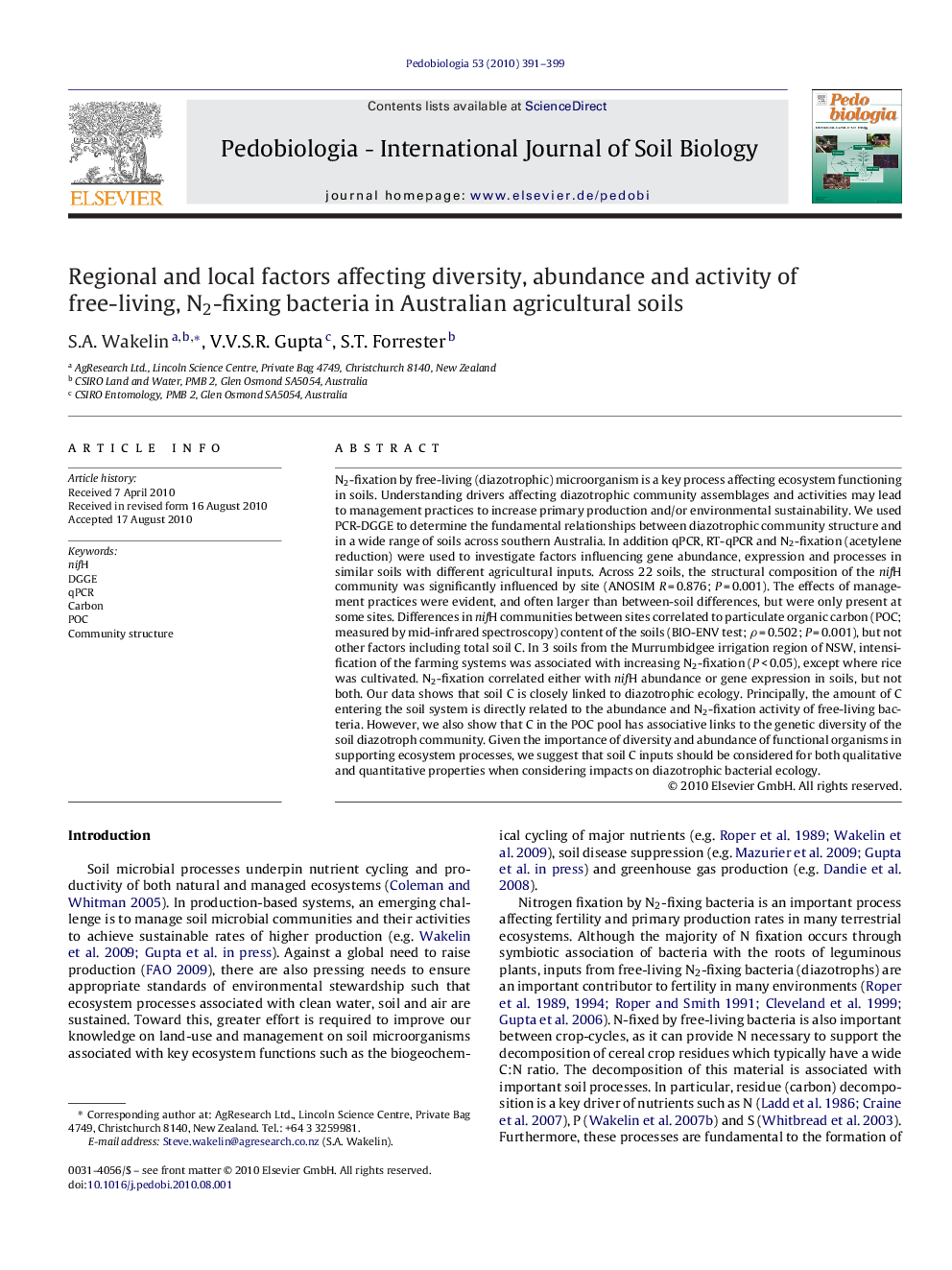| Article ID | Journal | Published Year | Pages | File Type |
|---|---|---|---|---|
| 2061262 | Pedobiologia | 2010 | 9 Pages |
N2-fixation by free-living (diazotrophic) microorganism is a key process affecting ecosystem functioning in soils. Understanding drivers affecting diazotrophic community assemblages and activities may lead to management practices to increase primary production and/or environmental sustainability. We used PCR-DGGE to determine the fundamental relationships between diazotrophic community structure and in a wide range of soils across southern Australia. In addition qPCR, RT-qPCR and N2-fixation (acetylene reduction) were used to investigate factors influencing gene abundance, expression and processes in similar soils with different agricultural inputs. Across 22 soils, the structural composition of the nifH community was significantly influenced by site (ANOSIM R = 0.876; P = 0.001). The effects of management practices were evident, and often larger than between-soil differences, but were only present at some sites. Differences in nifH communities between sites correlated to particulate organic carbon (POC; measured by mid-infrared spectroscopy) content of the soils (BIO-ENV test; ρ = 0.502; P = 0.001), but not other factors including total soil C. In 3 soils from the Murrumbidgee irrigation region of NSW, intensification of the farming systems was associated with increasing N2-fixation (P < 0.05), except where rice was cultivated. N2-fixation correlated either with nifH abundance or gene expression in soils, but not both. Our data shows that soil C is closely linked to diazotrophic ecology. Principally, the amount of C entering the soil system is directly related to the abundance and N2-fixation activity of free-living bacteria. However, we also show that C in the POC pool has associative links to the genetic diversity of the soil diazotroph community. Given the importance of diversity and abundance of functional organisms in supporting ecosystem processes, we suggest that soil C inputs should be considered for both qualitative and quantitative properties when considering impacts on diazotrophic bacterial ecology.
